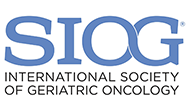The validity of geriatric assessment questionnaires to predict outcome and adverse events during the management of the elderly with cancer is now demonstrated. Yet comprehensive geriatric assessment (CGA) is often not feasible in all elderly patients with cancer. Consequently, patients could be first proposed screening before considering CGA.
Geriatric Assessment
Geriatric assessment provides an overview of the general health status of older individuals and determines the functional and physiological age, which is more important than chronological age. It includes several important domains: functionality, nutrition, cognition, psychological state, social support, comorbidities, medication review, and geriatric syndromes.
Geriatric assessment helps Oncologists to:
- understand the overall health status of the patient
- identify previously unknown health problems
- predict life expectancy of the patient
- predict tolerance of treatments
- influences treatment choices
- identify geriatric interventions that can improve treatment tolerability and compliance
How does it work?
Several models to implement geriatric assessment exist, and it is probably best to use geriatric assessment tools and geriatric expertise according to local/national habits in the geriatric community.
European Model: Many European countries work with geriatric screening tools, and only full CGA when the screening test shows a geriatric risk profile. This system has the advantage that a full CGA, which is time consuming, is done only for those who really need it.
USA Model: Many centres work with patient completed geriatric questionnaires. This has the advantage that the workload is mainly done by the patient (or caregiver).

Tools
Screening tools
Screening Tools only take a few minutes, and can be used in busy practices to distinguish fit older patients (+/- 30% of the 70+ cancer population) versus older cancer patients at risk for geriatric deficiencies (+/- 70% of the 70+ cancer population). The latter group requires a full CGA.
Full CGA (Comprehensive Geriatric Assessment)
Full Comprehensive Geriatric Assessment (CGA) comprises a systematic evaluation of the most important geriatric assessment domains.
Screening for vulnerability
When the physician faces an older patient with cancer, the first thing to perform is a screening for frailties which will allow identifying patients who may benefit from further evaluation, ideally CGA. A few tools have been developed and validated.
For general review, please read the SIOG Taskforce paper:
- Screening tools for multidimensional health problems warranting a geriatric assessment in older cancer patients: an update on SIOG recommendations. Decoster L, Van Puyvelde K, Mohile S et al. Ann Oncol 2015 Feb;26(2):288-300.
To further work on this topic, reference papers for each of the major tools and link to reference papers are outlined on the right hand-side.
Comprehensive Geriatric Assessment (CGA)
When screening suggests potential frailties, performance of CGA is the optimal approach to better identify risks and consequently tailor treatment, as demonstrated in numerous papers and recently reviewed in a SIOG Taskforce (Wildiers 2014). The main geriatric domains to be assessed in CGA are functional status (FS), fatigue, comorbidity, cognition, mental health, social support, nutrition and geriatric syndromes (e.g. dementia, delirium, falls, incontinence, osteoporosis or spontaneous fractures, neglect or abuse, failure to thrive, constipation, polypharmacy, pressure ulcers, and sarcopenia) (Wildiers 2014). Many tools are available. Some of them are outlined on the right hand-side.
- International Society of Geriatric Oncology consensus on geriatric assessment in older patients with cancer. Wildiers H, Heeren P et al. J Clin Oncol 2014; 32: 2595-2603


